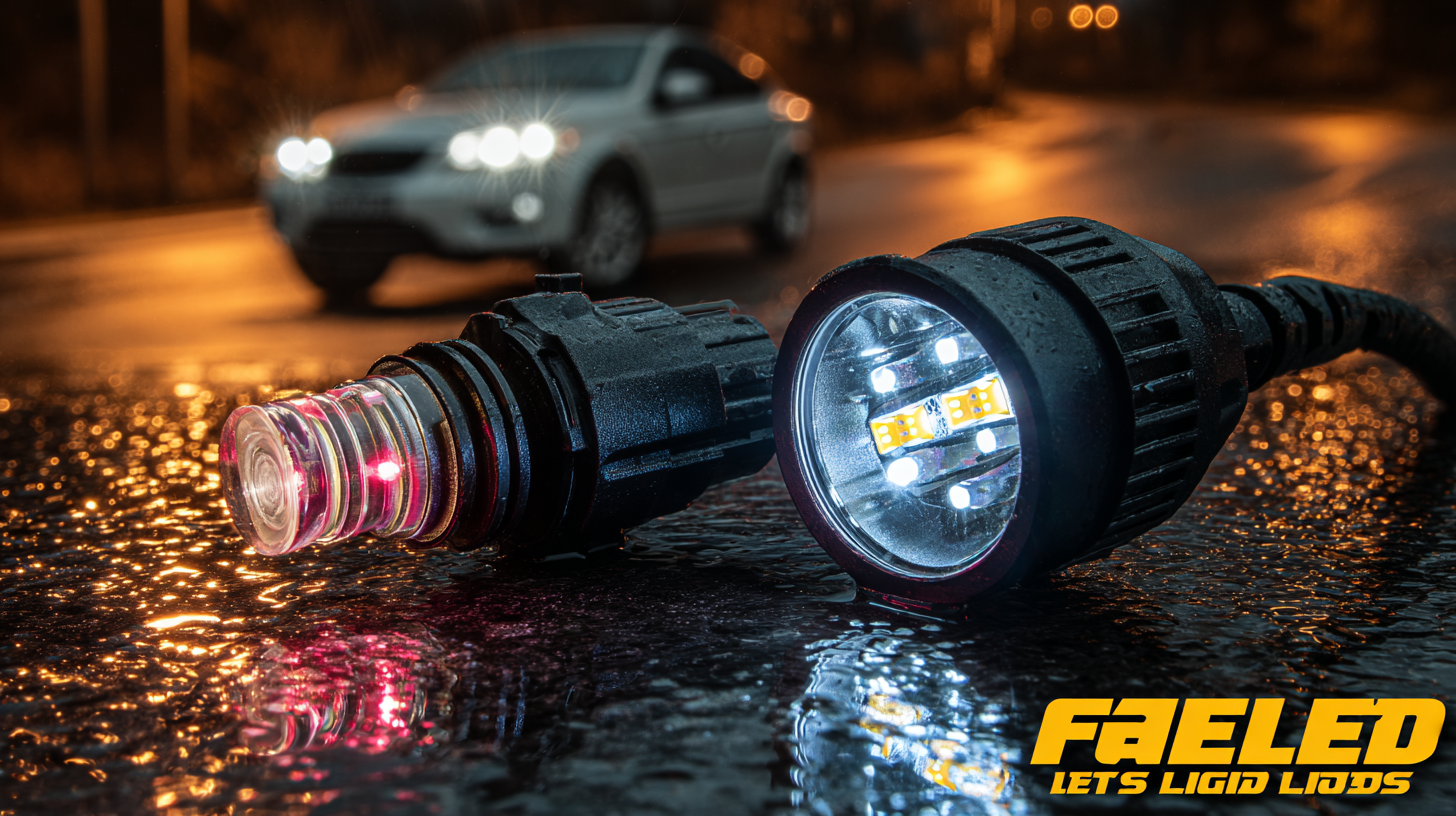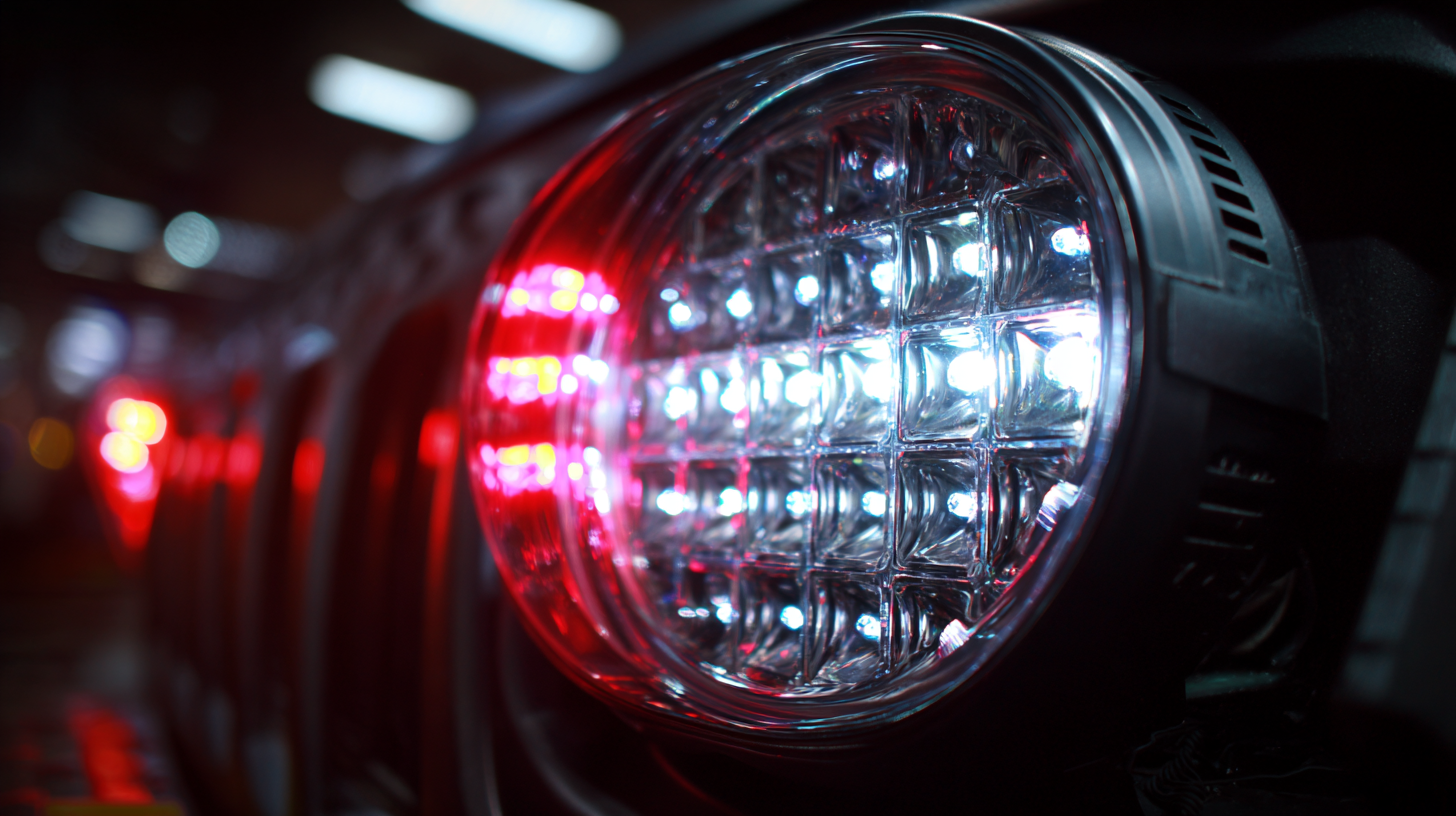As the automotive industry continues to evolve, the demand for high-quality Auto LED lights has surged. According to the latest report by Market Research Future, the global automotive LED lighting market is projected to reach over $33 billion by 2025, growing at a CAGR of 12% from 2019 to 2025. This rapid expansion can be attributed to the increasing popularity of lightweight and energy-efficient lighting solutions among consumers and manufacturers alike. Auto LED lights not only enhance visibility and safety but also contribute to the aesthetic appeal of vehicles.

Auto LED lights have become increasingly essential for vehicle safety and aesthetics in recent years. According to a report by the National Highway Traffic Safety Administration (NHTSA), proper lighting plays a crucial role in reducing nighttime accidents, with studies showing that over 50% of road fatalities occur during dark conditions. The brightness and efficiency of LED lights improve visibility, making it easier for drivers to spot pedestrians, road signs, and obstacles, thus enhancing overall road safety.
In addition to safety, LED lights significantly elevate a vehicle's aesthetic appeal. Research from the Automotive Lighting Market indicates that vehicles equipped with stylish LED lights can increase visual impact and desirability, appealing to consumers who prioritize a modern look. The customizable nature of LED lighting allows drivers to personalize their vehicles, contributing to a sense of ownership and individuality. Moreover, LEDs consume less power and have a longer lifespan than traditional bulbs, making them a cost-effective investment for vehicle owners looking to enhance both functionality and style.
When choosing the best auto LED lights for your vehicle, several key features should be at the forefront of your decision-making process. First and foremost, consider the brightness of the lights, measured in lumens. Higher lumens indicate brighter lights, which enhance visibility during night driving or in adverse weather conditions. Additionally, look at the color temperature, typically ranging from 3000K (warm yellow) to 6500K (cool white). A color temperature around 5000K is ideal, as it closely mimics natural daylight, promoting better visibility without causing eye strain.
Another crucial factor is the beam pattern and projection. Opt for LED lights that offer a wide and focused beam to ensure optimal coverage on the road ahead. It's also essential to consider the durability and weather resistance of the lights. Look for products with high IP ratings, indicating they are resistant to dust and water, which is vital for long-lasting performance in various driving conditions. Lastly, check for compatibility with your vehicle, as LED light types may vary significantly. By carefully evaluating these features, you can select LED lights that not only enhance your vehicle's appearance but also improve safety on the road.

When choosing the best auto LED lights, it's essential to consider the balance between quality and price. Industry reports indicate that the global automotive LED market is projected to grow at a CAGR of approximately 11.8% from 2021 to 2026, driven by consumer demand for energy-efficient lighting solutions. This growth highlights the importance of selecting brands that not only boast competitive pricing but also deliver on quality.
Top brands such as Philips, Osram, and Sylvania are frequently mentioned in consumer satisfaction surveys, with Philips receiving an excellent rating for durability and luminosity. According to a 2023 report from Automotive Lighting Solutions, 70% of consumers reported a significant improvement in visibility after upgrading to high-quality LED lights, reinforcing the notion that investing in reputable brands can yield substantial benefits for safety and performance. While budget options may be tempting, opting for established manufacturers often proves more cost-effective in the long run, given their enhanced lifespan and warranty offerings.

When it comes to installing auto LED lights, proper installation is key to ensuring optimal performance and longevity. According to a recent report by the Automotive Lighting Industry Association, correctly installed LED lights can last up to 25,000 hours, significantly outpacing traditional halogen bulbs which average around 1,000 hours. The first step in proper installation is ensuring compatibility with your vehicle’s electrical system. Employing the right connector type and measuring voltage requirements can prevent potential short circuits and maximize efficiency.
Moreover, attention to detail during installation can help avoid common pitfalls that lead to reduced lighting performance. For instance, a study by an automotive lighting technology firm found that misalignment during installation can reduce light output by as much as 30%. To achieve precise placement, make use of level and adjustable mounts. Additionally, ensuring that the LED lights are properly sealed against moisture buildup can vastly improve their performance in various driving conditions, reducing the chance of premature failure. When equipped with the right knowledge and tools, installing auto LED lights becomes a straightforward process, yielding enhanced visibility and safety on the road.
| Feature | Description | Benefits | Installation Tips |
|---|---|---|---|
| Brightness | Measured in lumens, higher lumens mean brighter light output. | Improved visibility during night driving. | Ensure you choose LED lights with adequate brightness for your needs. |
| Color Temperature | Measured in Kelvin (K), affects the color of the light. | Warmer colors create a cozy ambiance, cooler colors enhance visibility. | Choose a color temperature that suits your preference and enhances safety. |
| Lifespan | Typically rated for 30,000 to 50,000 hours. | Longer lifespan reduces the need for frequent replacements. | Check warranty information and customer reviews for longevity. |
| Energy Efficiency | Use less power compared to traditional bulbs. | Lower energy consumption translates to better fuel efficiency. | Make sure your vehicle's electrical system can support LED installations. |
| Brightness Adjustment | Some LED lights come with adjustable brightness settings. | Allows for customization based on driving conditions. | Consider dimmable options for better control over light output. |
Maintaining your auto LED lights is crucial for ensuring their longevity and efficiency. According to a report by the Automotive LED Lighting Market, proper care can extend the lifespan of LED lights up to 50,000 hours, compared to only 10,000 hours for traditional halogen bulbs. Regularly cleaning the light fixtures removes dirt and grime that can obstruct brightness, and checking for moisture accumulation helps prevent premature failure. Remember that moderation in usage also plays a role; turning off lights when not needed can significantly impact their operational life.
Additionally, it’s essential to keep an eye on electrical connections. A study published by the Institute of Electrical and Electronics Engineers highlights that bad connections can lead to inconsistent power flow, which may shorten the LED's lifespan. Routine inspections can help identify potential connection issues before they become problematic. By following these maintenance tips, vehicle owners can ensure their auto LED lights operate efficiently while achieving the maximum lifespan, thus reducing the frequency of replacements and contributing to overall cost savings.
